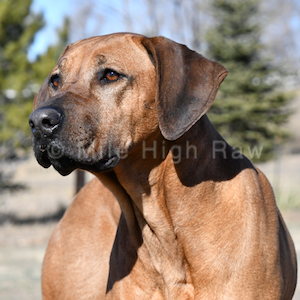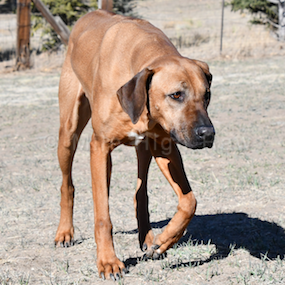Which Processed Pet Food Makes the Most Sense?
Mile High Raw avoids processed pet food. We believe your pet deserves a minimally processed meal using the freshest ingredients possible. Today’s current health issues are quickly increasing with our pet cats and dogs. Is there a correlation? Choosing raw dog food made consistently well, and meeting AAFCO (Association of American Feed Control Officials) standards is vital in finding your dog’s best nutrition. Here’s a look at the types of processed pet food, ingredients, and processing methods used in today’s products that are readily available and designed for extended shelf life.
Processed Pet Food Types
- Biscuits
- Canned Dog/Cat Food
- CPP Cold Pressure Pasteurization
- Dry Dog/Cat Food
- Extruded Dog Food
- HPP (High-Pressure Pasteurization) Raw Dog Food
- HPP Raw Cat Food
- Kibble
- Semi-Moist Dog/Cat Food
- Treats
Ingredients
- Beet Pulp
- By-products of Meat, Poultry, and Seafood
- Citrus Pulp
- Corn
- Grains
- Fat
- Meat, Poultry, and Seafood
- Minerals
- Potatoes
- Preservatives
- Rice
- Soy
- Vegetables
- Vitamins
- Wheat
Dog Food Processing Methods
- Baking
- Extrusion
- Pelleting
- HPP or CPP
Now that you understand what goes into your dog/cat food, we can look further at how most common dog/cat food types are processed.
Dry Kibble
Dry kibble is processed pet food they cook. First, the raw ingredients are ground (typically to a powder, which increases the ability to mix and absorb water uniformly. It’s then compounded/mixed with liquid ingredients and then into the extrusion process. The dough is also cooked under high pressure and high heat as it passes through the extruder to be shaped and cut to size. It’s then dried in an oven until it meets the correct moisture level for long shelf-life stability. Finally, the product is cooled and possibly/likely goes through an enrobing process. Enrobing adds a liquid or powder to the kibble that helps with flavor and palatability.
Semi-Moist Dog Food
Semi-Moist Dog food is processed pet food, which they cook. The processing is very similar to dry kibble. One main difference is the extruder uses lower pressure and temperature. Also, Instead of drying the dog food product, humectants (chemicals helping the product maintain moisture content) and acids are added. The semi-moist dog food is then cooled to help it retain higher moisture and sponge-like texture. As a result, the product is susceptible to losing its texture and moisture content. It is also more likely to have mold or bacteria, which leads to spoilage. The product’s formulation uses mold and bacteria inhibitors and generally uses unique moisture-proof packages to avoid spoilage.
Canned Dog Food
Canned dog food is cooked processed pet food. It’s cooked and sealed, similar to human canned foods. The base is comprised of mainly meat products. It typically consists of a combination of fresh, frozen, and meat by-products. These are then mixed with minerals, vitamins, and sometimes grains. Finally, the dog food product is heated as it’s mixed. This heat allows the starch to start gelatinizing, and the proteins denature. This process improves the flavor and texture of the end product.
Canned Dog Food with Carbohydrates
If the canned dog food includes carbohydrates, a higher temperature is required. Once cooked, the product is canned using steam for a vacuum seal. This process is intended to prevent spoilage. The product is cooked to 249.8° Fahrenheit for at least 3 minutes, ensuring the dangerous bacteria are killed. The main concern for this cooking process is clostridium botulinum bacteria.
HPP (High-Pressure Pasteurization) in Raw Dog Food
HPP raw dog food is processed pet food. I don’t consider HPP processed raw food a genuine, wholesome product. At least they skipped the cooking part! There are likely nutrient damage and inactivation of beneficial microorganisms during the process. Large water tanks that can withstand ridiculous amounts of pressure are used.
HPP Process
Raw dog food is put into sealed packages in a large water tank. Water surrounds the product in the sealed packaging. Coldwater is then pumped into the chamber at very high pressure. This high-pressure technology squishes bacteria to death. Some bacteria can survive the pressure, but it would be hard for them to withstand the sudden pressure change upon opening the tank. Some cell walls are damaged, rendering the product unattractive, and may alter the taste in the process. This process is best for products with high moisture content. HPP typically adds a shelf life of 2-3 times longer than minimally processed raw dog food. I believe this pet food processing is better than other processed pet food. Unfortunately, it doesn’t meet the quality and freshness of minimally processed raw dog food.
Minimally Processed Colorado Raw Dog Food
The best raw dog foods, mostly Aunt Jeni’s Home Made and Albright’s Raw Dog Food, are minimally processed. Also, no cooking or pasteurization allows for a natural, wholesome dog food that helps dogs and cats to thrive. A minimally processed raw dog food typically goes through a rough grind to create a consistent, balanced mix. It is adequately tempered in the mixing process and quickly flash frozen. Anything further would lessen the product’s natural composition and quality. The best things in life are meant to be simple, minimally processed. Colorado raw dog food is no different.
Conclusion
Cooking, over-grinding ingredients, and pasteurization seem to increase the shelf life while decreasing the quality and wholesomeness of the end product. A quality dog/cat food processor would use fresh meat and a rough grind, not a colorful, attractive package, including inferior quality products. The world is starting to see the benefits of whole raw foods, and it’s no different for our pets. Feeding a minimally processed Colorado raw dog food has allowed me to avoid visiting a veterinarian with a problem related to their raw diet. I’ve had minimal trips to a veterinarian other than required vaccinations. A dog is a scavenger by design and has a sturdy digestive tract. I’d only look towards other foods if my dog’s immune system were compromised or following chemotherapy for cancer. Otherwise, I’ll feed minimally processed raw dog food to my pets indefinitely—Colorado pet food for thought. Therefore, choose wisely!
Contact us to purchase the best minimally processed dog food supplements and complete and balanced raw dog foods.


